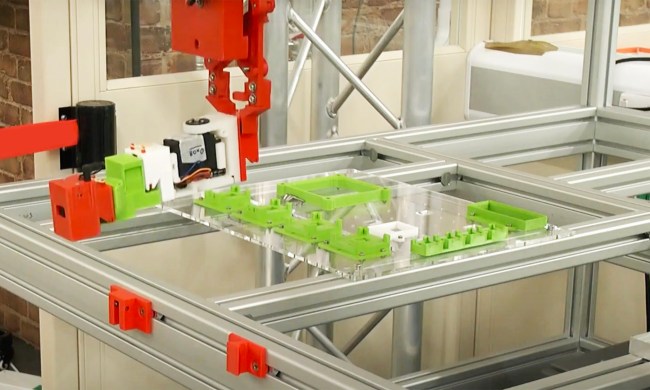Picking apples isn’t a challenge that you’d necessarily think calls for the latest high tech robotic technology to solve. That hasn’t been enough to stop California-based startup Abundant Robotics, however. The company has developed a cutting edge solution to the apple-picking problem in the form of an autonomous tractor-style vehicle which can navigate through orchards using Lidar. Once it spots the apples it seeks, it’s able to detect their ripeness using image recognition technology. It can then reach out and literally suction its chosen apples off the trees and into an on-board storage bin.
We first wrote about this still-unnamed robot apple picker back in 2016, when Abundant founder Dan Steere told us that it was still a couple of years from commercialization. “Production of many types of fruits and vegetables is harder to automate than other types of agriculture,” Steere told Digital Trends at the time. “With apples, the main problems are that fruit is hard for computers to see, and it’s delicate. Until now it has not been possible to either reliably identify produce or automate harvesting without damaging the produce.”
Jump forward to the present day, and Abundant’s apple-sucking creation has been completed and officially brought to market. It already has its first customer, too, in the form of a New Zealand orchard. “Picking fruit is heavy work,” Peter Landon-Lane, COO of apple grower T&G Global, told Wired. “To pick a hectare of apples involves pickers collectively doing something like 5 vertical miles going up and down ladders. With mechanization and robotics, it allows us to take out a lot of the heavy work.”
This isn’t the first time we’ve covered fruit and vegetable-picking robotic tech. Other projects in this vein include robots designed to pick strawberries, tomatoes and cucumbers. We have also written about autonomous robot tractors. The hope is that using robots for picking tasks can greatly help improve efficiency, since they are able to work 24/7. With a big shortfall in the number of humans willing to work these produce-picking jobs, robots could prove to be a vital tool for the future of agriculture as we know it.


